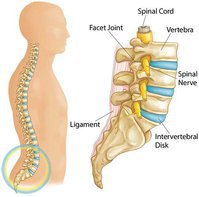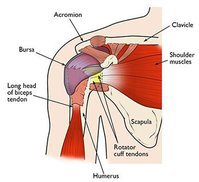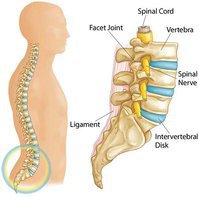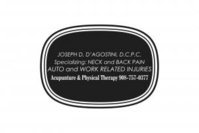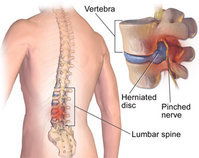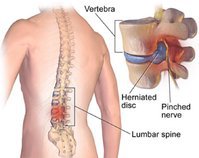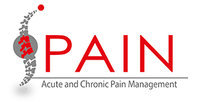Between each vertebra lies a fibrocartilagenous structure called the intervertebral disc. This disc is present at all levels of the thoracic spine. The disc is comprised of a series of outer fibrous rings (annulus fibrosis) and a gelatinous center (nucleus pulposus). The walls of the disc are thinnest and weakesr posterior laterally where the spinal nerves exit the spinal column. The disc serves as a joint between the vertebrae, functions as a cushion and allows movement between the vertebra.
Inflammation, damage or degeneration of a disc can cause a range of symptoms, which vary based on the severity of the problem. Disc pathology may produce a loss of back motion, back pain, pain that radiates from the back around the ribs and chest, numbness, tingling, muscle spasm or some combination of these symptoms. The thoracic level with the highest rate of disc degeneration is T8-T12. The incidence of thoracic disc problems is far lower than in the lumbar and cervical area.
